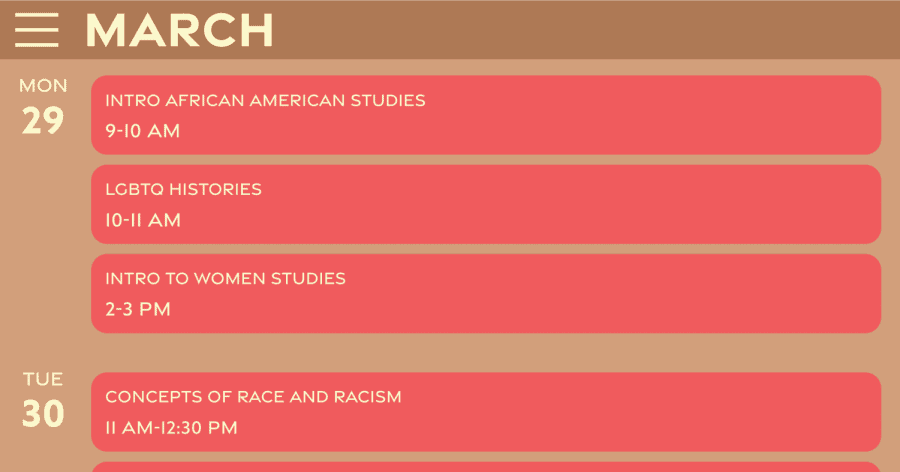Opinion | Cultural awareness isn’t just a trend. It’s a necessity
Students and faculty have been working hard to bring diverse resources to campus. Here’s how you can take advantage of them.
March 29, 2021
Life as a UA student is full of new experiences.
Maybe it’s your first time living by yourself, or the first time having a roommate. Maybe it’s your first lecture with more than 30 people, or your first football game in a huge stadium.
Or, maybe it’s your first experience encountering people whose experiences are different from your own.
College is a wonderful opportunity to meet many people of different identities, as well as develop what it means to be a member of certain communities yourself. As a student the expectation is not only to learn academically, but to also learn about the world around you. In a society that celebrates individuality, we should celebrate the identities and qualities that make everyone an individual in the first place.
While there should be celebration for different identities, it’s also ignorant to claim that learning and awareness is not an absolute necessity.
Inequities, prejudice and systemic injustices have hurt people whose identities are marginalized. We are yet to live in a world where diversity is celebrated without fear of hate. In the wake of movements such as Me Too and Black Lives Matter, and in a year of heightened hate crimes against Asian Americans, diversity is at the forefront of discussion, as well as hostility.
If you are in a place of privilege, this truth applies specifically and directly to you: It is now more important than ever to gain an understanding of others.
“It becomes [our generation’s] responsibility to educate ourselves on everyone’s culture as we have countless resources and knowledge to do so,” said Caroline Yuk, a senior majoring in interdisciplinary studies. Yuk has taken American Sign Language (ASL) courses for two semesters, which focus on the language and d/Deaf culture. “I look forward to applying my knowledge of ASL to encounter more Deaf people so I can hear their story and life experiences directly from them.”
The University offers a number of resources that focus on diversity and educating others. The Division of Diversity, Equity and Inclusion and the Woman and Gender Resource Center are available to students. There are also over 70 student organizations that focus on diversity.
The Division of Diversity, Equity and Inclusion is finishing up their celebration of Women’s History month and has had an impressive slate of events. If you missed out, don’t worry; you can be sure to find more events centered on diversity for the rest of the semester (and for semesters to come) on their website.
In addition to programs and events, a great way to learn about diversity is to do what students do best: take a class on it. Over a third of UA courses are stated to include aspects of diversity education. But classes are also available that focus exclusively on different identities and the history, culture, and hardships that surround them. The Department of Gender and Race Studies offers a list of courses that you can find here.
“I think it is very crucial to have some sort of diversity teaching involved in our daily education” said Chandler Smedley, a freshman who took a women’s studies course in the fall. “Taking a class helped me better understand certain issues and… communicate them to my friends.”
Through organizations like Lucy’s Legacy, a living-learning community of first-year women of color, Smedley said she has found a community that can empathize with what it’s like to be a Black student on campus.
“Sometimes you feel like you don’t belong,” she said. “I know for a fact that other minorities can sometimes feel the same.”
It’s no secret that the University has a long way to go in terms of diversity. One only has to look at the recent student government slate and maybe talk to a student worker or two to see that the University is not the melting pot it could be. The purpose of this column is not to display the University as a perfect model of awareness and progress, but to highlight that students and faculty members have worked hard to incorporate diversity and inclusion into our campus.
It’s hard work that we can only benefit from if we take the opportunities in front of us.
Mathey Gibson, a freshman taking a special topics course on diversity and media, said that his class has opened his eyes to various aspects of diversity he had never considered before.
“The presence of diversity allows [us] to consider perspectives beyond those we’ve already formed early in life,” he said. “I would absolutely encourage other students to enroll in diversity-based classes.”
As course selection for the fall semester comes closer and advising draws near, consider adding a diversity-focused class to your schedule. The path toward equality and progress begins with understanding, and understanding begins with you.










